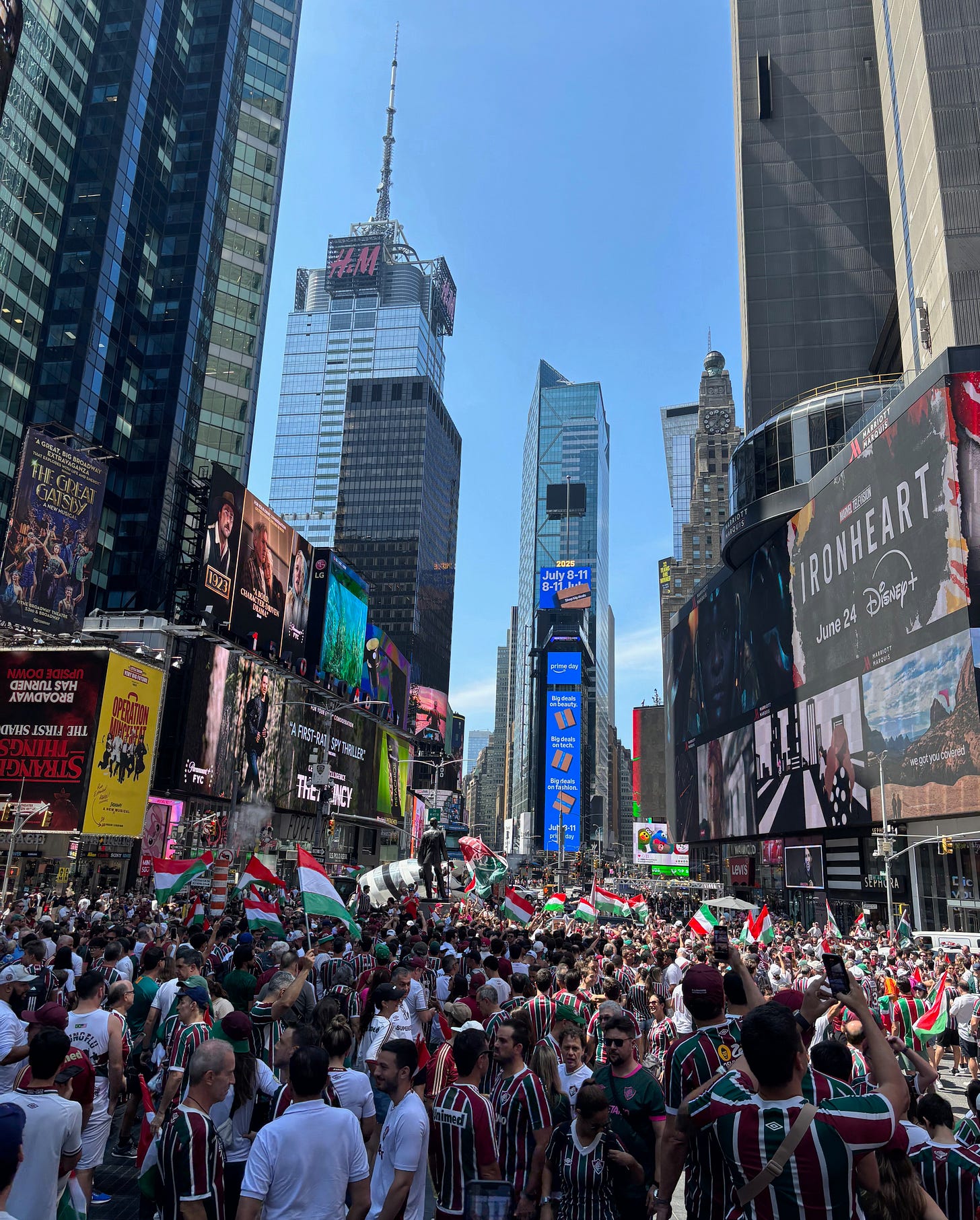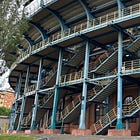Standing on a concrete jetty in the sea of green and white and maroon, a man was FaceTiming with his wife and kid. He switched his phone to the front camera, facing outward. On the screen, his young son’s eyes went wide, his mouth gaped open.
He saw all the tricolor striped shirts bouncing up and down, all the tricolor flags waving in the foreground while the kaleidoscopic digital displays and boldface billboards for Broadway shows rose up behind them. They were dancing and singing in this valley between the glass skyscrapers like some joyous army who’d conquered the capital of the world. Theirs looked like Hungarian flags, but these belonged to football fans. They were flown by the Fluminense faithful as they took over Times Square at 11 a.m. on a Saturday.
The Tricolor had come from Rio de Janeiro to New York for a Club World Cup match with Ulsan of South Korea. Well, the match was at MetLife Stadium out in New Jersey’s “Meadowlands,” a euphemistic name to say the least, and I never had any intent to go. But I did want to see the Fluzão take over Times Square, which a local supporters’ group called NY FLU had promised they’d do for a good hour and a half on Saturday morning.
There were whole families there together, little kids sitting on parental shoulders as they bounced up and down as a unit, and there were 20-something dudes with Modelos in brown paper bags. (With the match still seven hours away, this had the look of a serious day out. Suddenly, I wished I was going to the Meadowlands.) The sound of drums was constant, the choruses unstoppable even as the concentration of the crowd drifted back and forth across 46th street. Nobody was deterred by the passing cement trucks or the eight-foot Bumblebee from Transformers, one of the area’s bizarre (and occasionally infamous) street performers trading picture poses for tourist dollars.
It takes a lot to get a New Yorker to Times Square, but I’d been leaning towards coming even before I watched my first 30 minutes of Club World Cup football the night before. I’d tuned in just in time to see Miguel Merentiel score a glorious equalizing goal for Boca Juniors against Bayern Munich. He’d scampered in behind Jonathan Tah to latch onto a through ball, tapped it smartly around Josip Stanišić to get 1-on-1 with the keeper, and smacked it over Manuel Neuer with aplomb. Then I watched the Boca fans turn the Hard Rock Stadium into the Bombonera.
The South American teams have been the redemption for this tournament, even if you don’t buy that they’ve made some grand statement about where they stand in relation to the European outfits. (Brazil, it should be said, has four teams in the Round of 16.) The breathtaking cynicism and superficiality of this whole thing has been offset just a bit by what the Argentines and Brazilians have brought to the table, if only because these fans have been showing Americans what this game is all about.
How many young kids are seeing up close what it means for supporters to generate their own atmosphere, without any orchestration from the announcer or the Jumbotron? How many are feeling what it is to be in a crowd of people singing the same songs they and their fathers have for generations? These are not things you get from preseason friendlies. There have been some wonderful videos of bewildered Yanks getting drawn into crowd scenes on the street.




